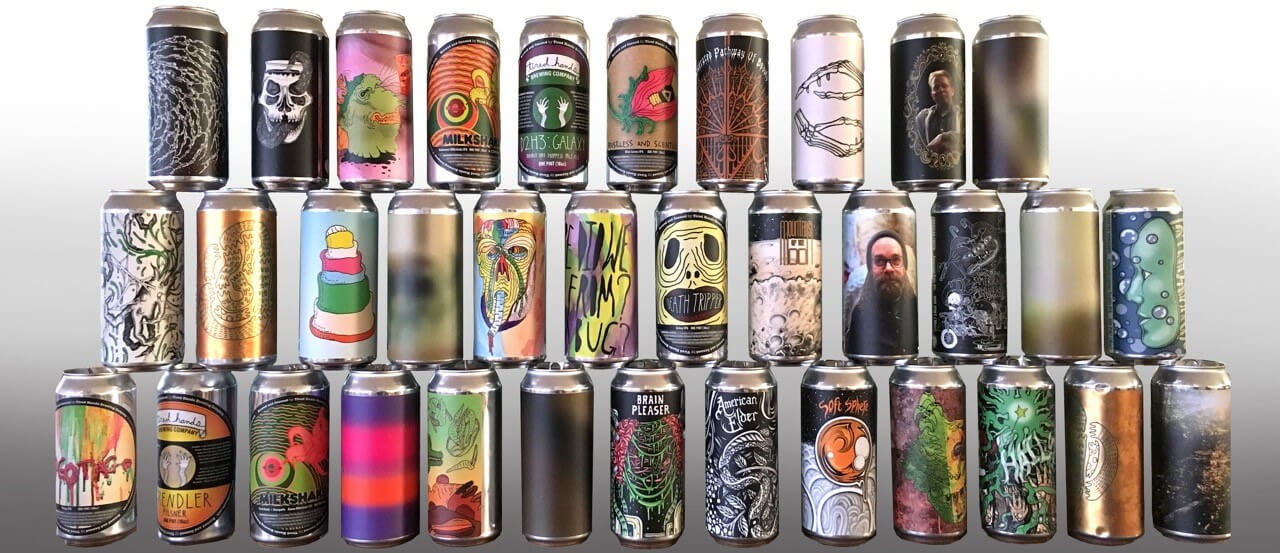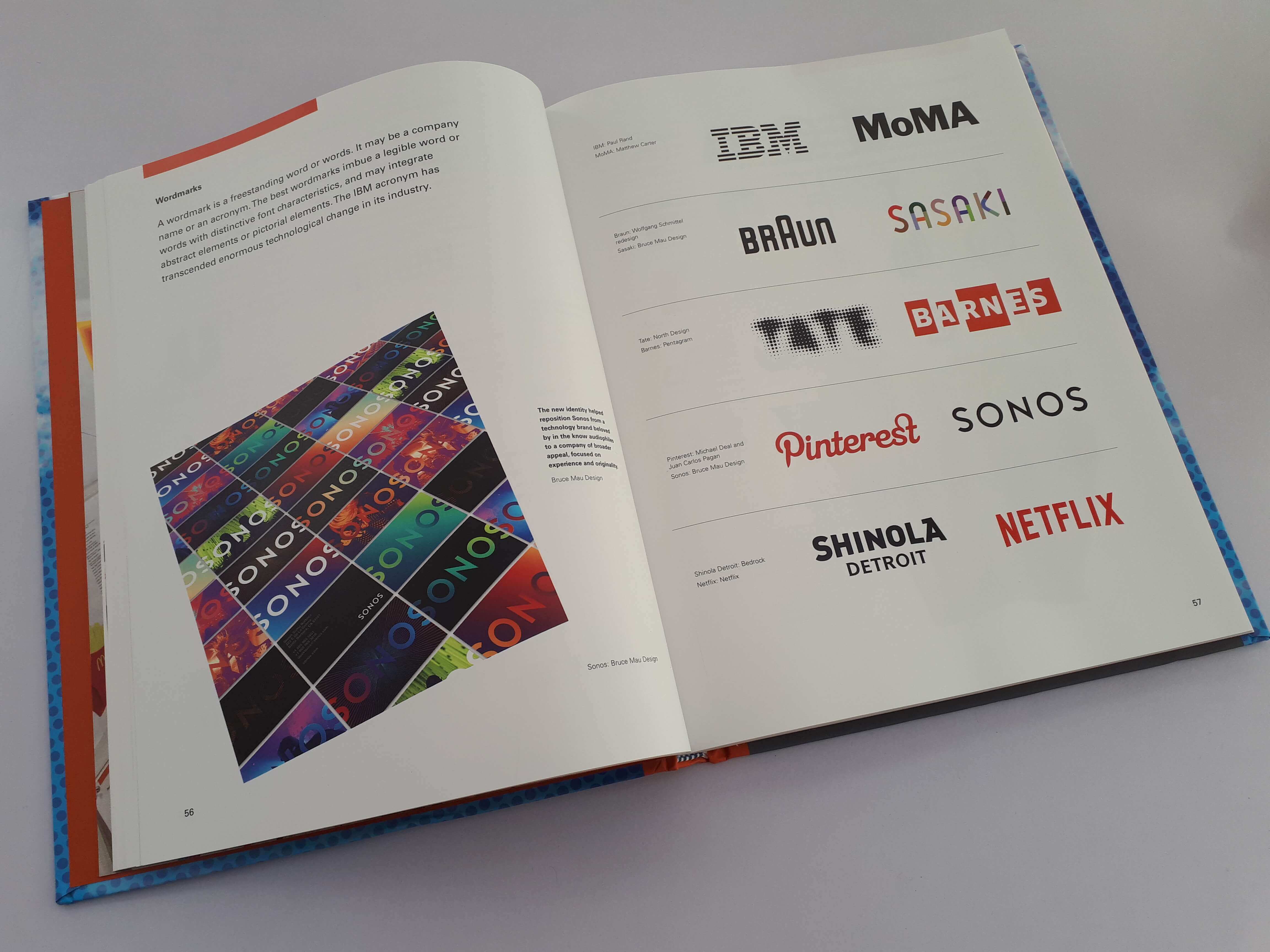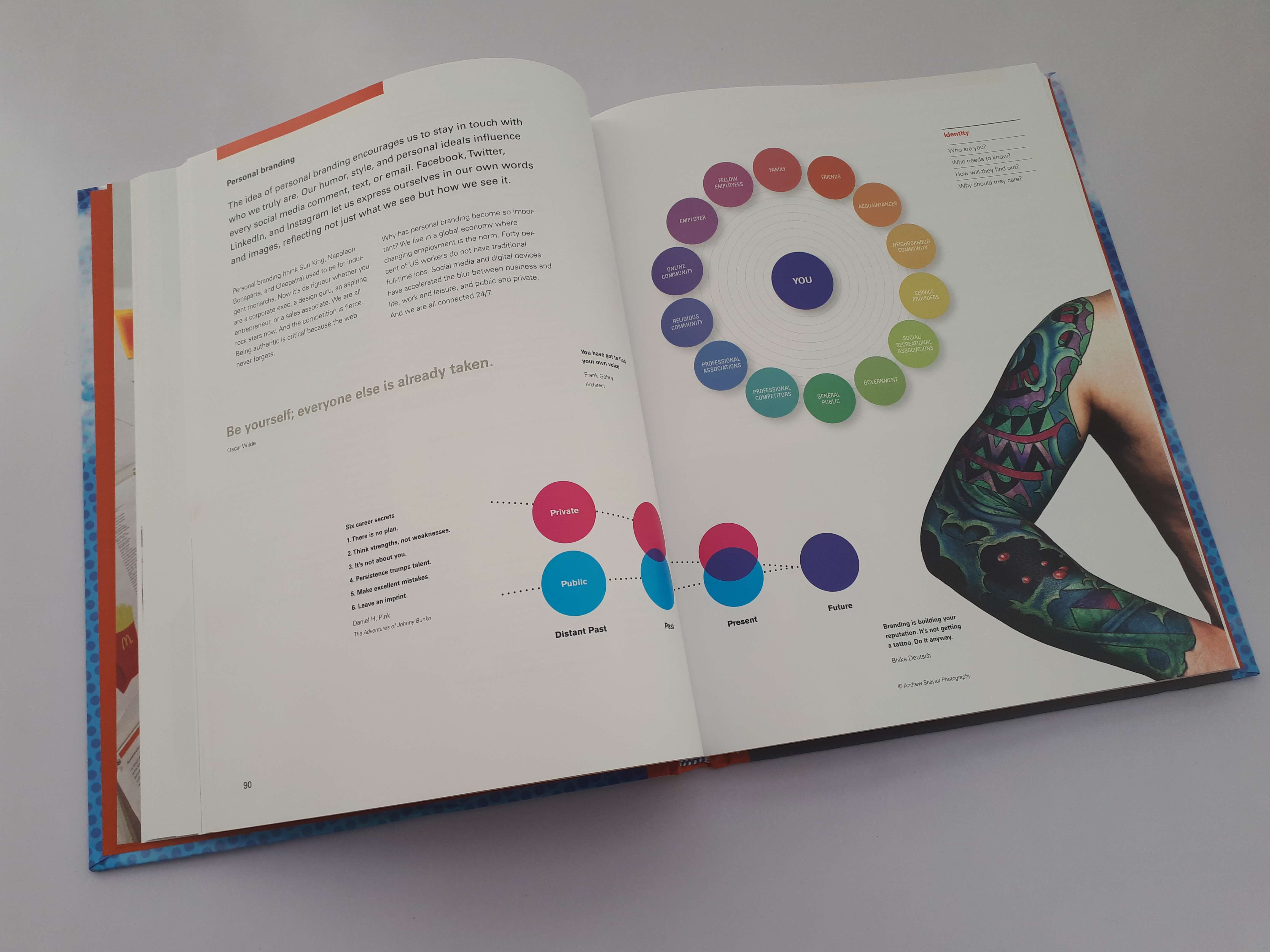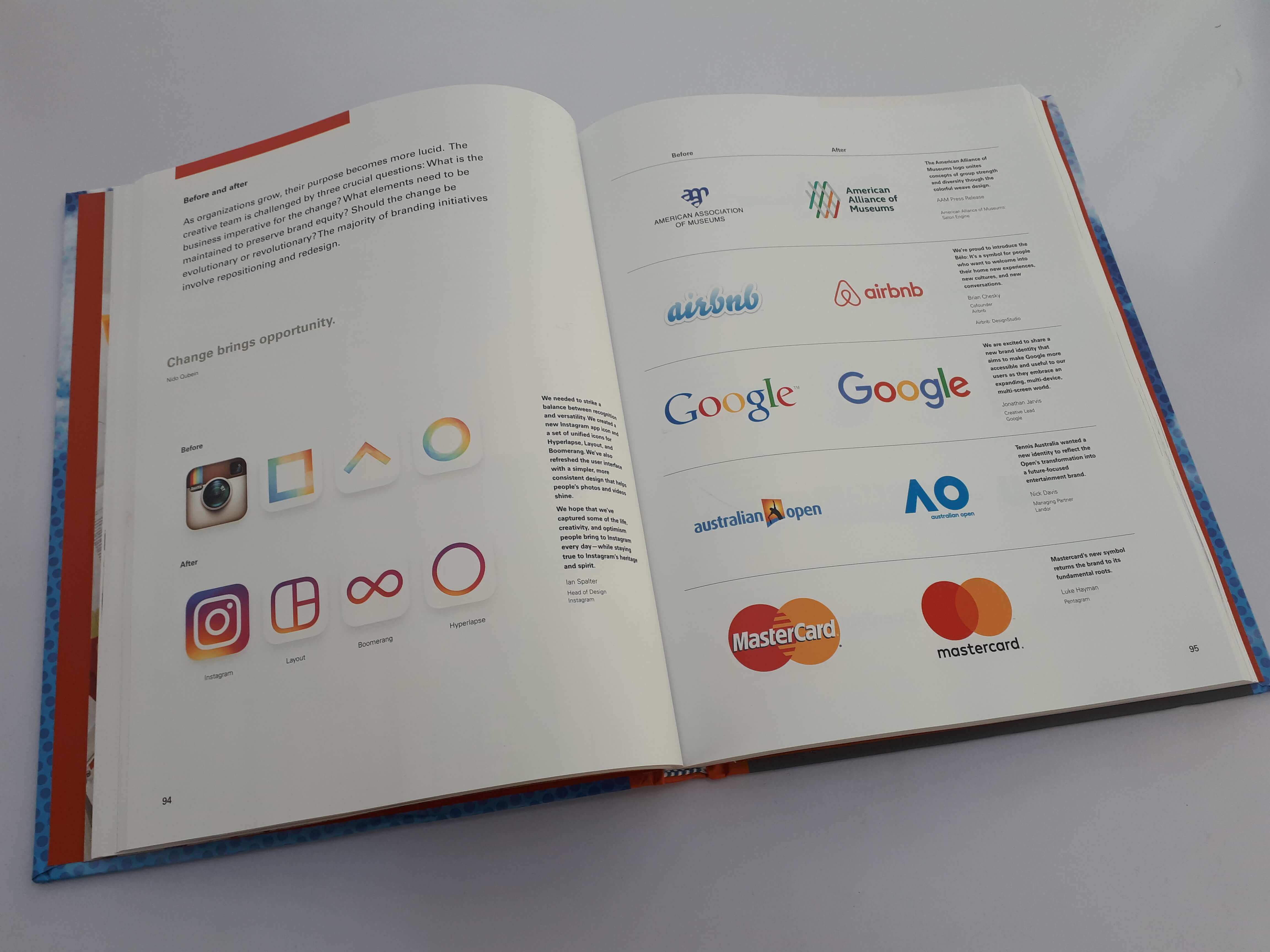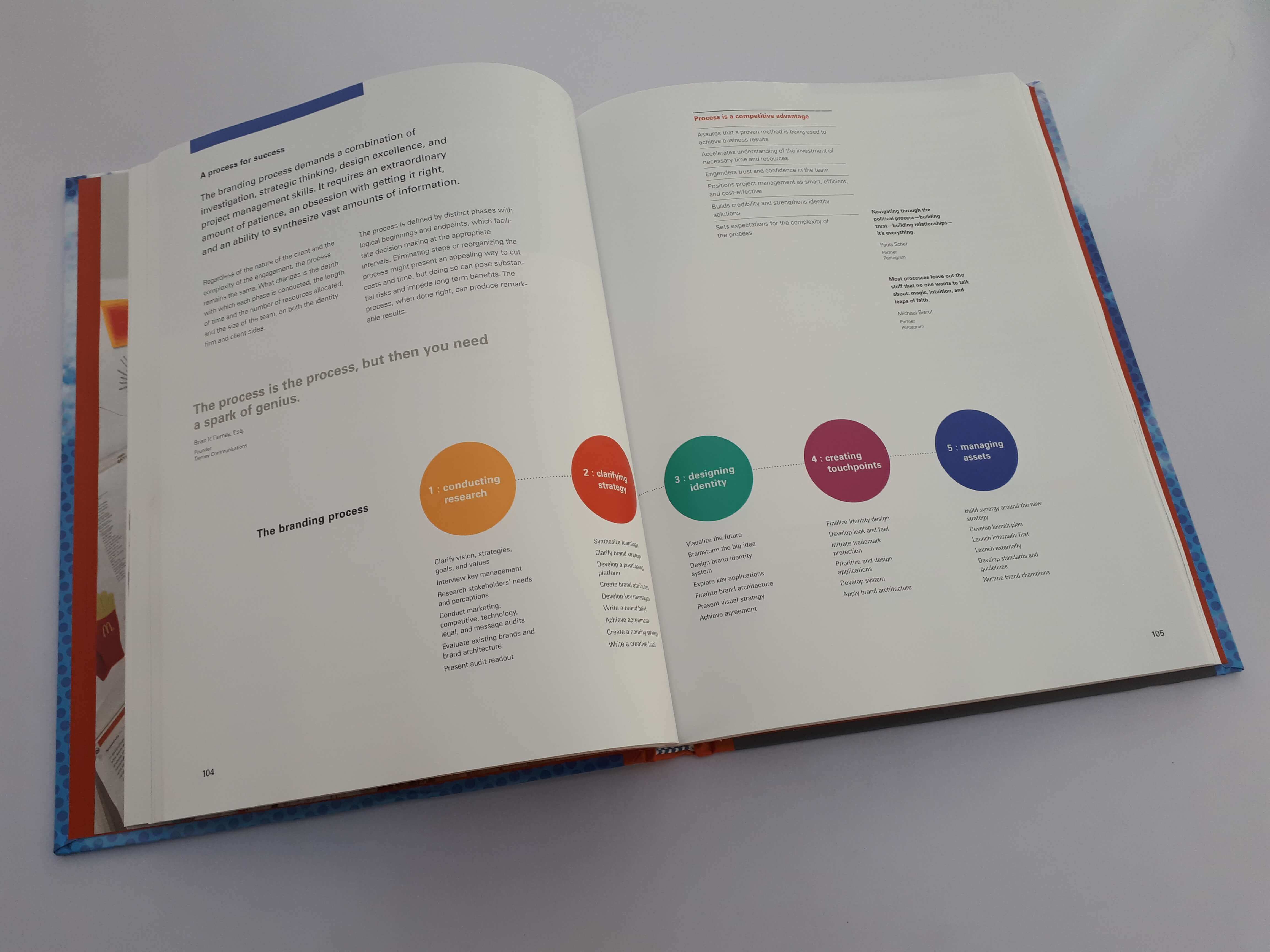
Today a designer interview with Alina Wheeler who is a design director and in-demand branding consultant to marketing executives and design consultancies, a frequent speaker and highly regarded author of the ever-popular book “Designing Brand Identity: an essential guide for the whole branding team” which is now in the 5th edition of writing this article but I’m certain if ever there was a new release in years to come it would be just as popular as the last.
Designer Interview With Alina Wheeler @alinawheeler #designerinterview #designthinking #branding #logodesign
https://t.co/4AmNcEl4U2 pic.twitter.com/oTbF3QlrUs— The Logo Creative™ (@thelogocreative) May 23, 2018
Her book, Designing Brand Identity, has become the foundational instruction manual for the discipline, and reference for both practicing pros and design students around the world.
If there was ever a person to talk to about branding then Alina Wheeler would be that person, she sure knows all about branding!

Alina explained she enjoyed a lifelong fascination with how people and organizations express who they are. Her business is strategic imagination and her passion is brand identity.
Alina has guided countless brand launches and reinventions and is frequently speaking to management teams about brand fundamentals, process, best practices, and critical success factors. She explains that “Brand leadership requires courage and building relationships across touchpoints. And It’s harder than ever to be the brand of choice. Collaboration is key, as is courage and a sense of humor”.
The Logo Creative – Hi Alina, I’m a big fan of your books and appreciate you taking part, it’s an honor to feature you.
Alina Wheeler – Thanks Andrew. I am delighted to be part of your great series of designer interviews.
The Logo Creative – What was the turning point in your life when you decided to become a designer and how did you proceed?
Alina Wheeler – In second grade, I went to a Catholic school, and each day the sister asked us to color-code our sins on our daily souls. Red if you had sinned slightly, black if you had done something really bad, and white if you had been perfect. This was my introduction to brand architecture and color-coding! In ninth grade, we had to create 50 interpretations of an egg, in different media. I loved exploring an idea and its infinite variations. Also, English wasn’t my first language, and I think it fed my lifelong fascination with how people and organizations express themselves—through symbols, images, and environments in different cultures. All of this led me to design as a profession. Through design, I could work with different people on solving different problems. My clients gave me opportunities to understand everything from biotech to banking- to healthcare- to cultural institutions and cities. When I joined AIGA, I realized that other designers weren’t my competition. They were my colleagues and we needed to work together to uphold the best practices of the profession.
The Logo Creative – What does your day consist of?
Alina Wheeler – I start my day by reading Quartz, a digital news feed, scan the New York Times and the Guardian and Fast Company, and zoom through Instagram and my favorite design blogs. If I am working on a big project, I get up at 4:30 am because my mind is clear and no one disturbs me. I coach some entrepreneurs and design firms, so I may be corresponding with them in the early hours. I answer all the email I get from my readers around the world. I post when I am inspired. I ‘m working on developing a workshop on the brand brief, and usually some upcoming speeches. I try to learn something new each day. I aspire to exercise every day, especially walking along Philadelphia’s Schuylkill River, which is across the street. I spend time with my husband and friends and stay in touch with the kids. I love reading both non-fiction (Dan Pink’s new book When: the scientific secrets of perfect timing) and fiction, like Red Sparrow by Jason Matthews—a Russian spy novel trilogy. When I am not travelling or in Philadelphia, we live on a mountain ledge in the Adirondacks and I hike a lot.

The Logo Creative – What is the first logo you ever designed?
Alina Wheeler – The first logo I can remember was Pennsylvania Hospital designed more than 35 years ago—it is the nation’s first hospital founded by Benjamin Franklin. It was a wordmark that needed to be applied to a brochure system, a banner system, signage, forms, and uniforms. This was before the computer—so parts of the wordmark were hand-drawn with a rapidograph and a brush. Part of the assignment was also designing an entire color and typography system for the hundreds of brochures. The hospital was acquired by a very large healthcare system and the mark is no longer in use.
The Logo Creative – What is your favourite Logo you have worked on?
Alina Wheeler – This is my symbol—it is about the intersection of identity, information, and intelligence. I often work as a design director, collaborating with amazing designers. We actually built a 3-dimensional model as part of the process.

The Logo Creative – What is your favorite logo?
This is a really hard question. Here are two marks that I love, and sadly neither of them are still in existence. One because of a corporate acquisition; another because of change in management and vision. I love these marks because they are both about big ideas—and scalable ie could work from tiny as an app icon to as big as a billboard. And, both studios designed applications that brought the brand to life.
Cingular was a new wireless company that was launched in 2000. Named and designed by VSA Partners, the logo embodied the idea of human expression— and was dramatically differentiated from any other carriers who were all talking about features and benefits. Internally, the mark was called “Jack.” Cingular was soon acquired by AT + T and folded into their master brand.

The Franklin Institute Science Museum in Philadelphia needed a new identity that would appeal to school children and the global scientific community. The symbol was designed by Hans-U. Allemann, principal at Allemann Almquist & Jones. The final mark conveys the transient moment of an eclipse and at second glance a sunrise behind a planet. It has layers of meaning and feels timeless.

The Logo Creative – Can you describe or give us an overview of your logo design process?
Alina Wheeler – Here is a diagram of my overall process. Sometimes I call it the Brand Identity Process and sometimes the Rebranding Process. Please note design does not begin until after there is research and agreement about the core tenets of the brand. Please note—this process works for profits and non-profits, big and small.
The Logo Creative – In your opinion regarding Logo Design pricing do you prefer working on a fixed rate or customer budget and can you explain why?
Alina Wheeler – I think the most important thing is establishing the goals and the endpoint of a project. I think it’s always good to ask what the client’s budget is—but often the budget is hard to pinpoint. I encourage clients to create a very tight RFP, and only ask three firms for a proposal. I found it really helpful to use my five- phase process to deconstruct the tasks and the deliverables. That way the client knows what to expect at each stage—services, presentations, and deliverables.
The Logo Creative – How long does it take to complete the average logo design project from start to finish?
Alina Wheeler – When I headed a design studio, the length of time depended on the complexity of the problem and how many decision makers there were. We were always retained to design the logo/ identity and the entire integrated system. Average projects for small companies were 6 months, and longer engagements were a year or more.
The Logo Creative – What is your favourite style of logo design? And why?
Alina Wheeler – I have no favourite style. I like what solves the problem best and fills the need across communications channels. I like logos that give the client latitude to grow, are dramatically differentiated within their sector, and work well across touchpoints—from an app icon to a digital billboard on Times Square.
The Logo Creative – What is your daily inspiration when you design?
Alina Wheeler – My biggest inspiration is leaving my desk and my to-do list. It could be anything from going to an art exhibit or a concert or a lecture or taking a long walk along the river or in the mountains. Sometimes I do this thing called “the Alina University” –I expose myself to new things and ideas. I went to a STEAM workshop (Science, Technology, Engineering, Art, and Math) at Drexel University two weeks ago, and learned about new methods of teaching science. Two days ago I attended a lecture about a woman who disguised herself as a man in order to fight in the American Revolution! Last night I went to a BalletX performance, and I woke up feeling renewed and unafraid to tackle the next obstacle.
You know I would be remiss if I didn’t mention the other thing that inspires me—I collect stuff. This is my collection of beer cans from Tired Hands.
The Logo Creative – In your opinion what’s been the best and worst part of your job as a design director?
Alina Wheeler – The best part is the creative process. Learning about something new, working toward a larger central idea, seeing where the ideation and sketch process takes you…creating something that helps unify an organization internally and externally… creating something that is sustainable, that has a long life. The hardest part is the decision making process, which is why I wrote Designing Brand Identity. The book can bring the MBA’s and creative professionals together to skilfully collaborate. By providing an agreed upon road map, people can take the branding journey together, making the best possible decision for the right reasons.
The Logo Creative – Who is the most inspiring person to you and why?
Alina Wheeler – David Bowie is one of my heroes. He was able to morph over 5 decades. More than a musician and performer, he was a shape shifter, a big thinker, a designer, a painter, and perpetually curious. He gave generations of fans the permission to be different. He made people think about gender fluidity—and he redefined sexuality and beauty. Did you know he studied graphic design in high school?
The Logo Creative – Who is your favourite Graphic Designer and why?
Alina Wheeler – My favourite living designer is Paula Scher. She is a masterful problem solver, an amazing communicator, and a brilliant designer. She inspires me—she keeps on moving. Also, I love that she has found time in her life to paint. I have seen her giant Map canvases in a gallery—and they are enchanting.
The Logo Creative – What’s your favourite design quote?
Alina Wheeler – My favourite design quote is Oscar Wilde: “Be yourself—everyone else is taken.” I also adore “If you think good design is expensive, you should look at the cost of bad design.” — Dr. Ralf Speth.
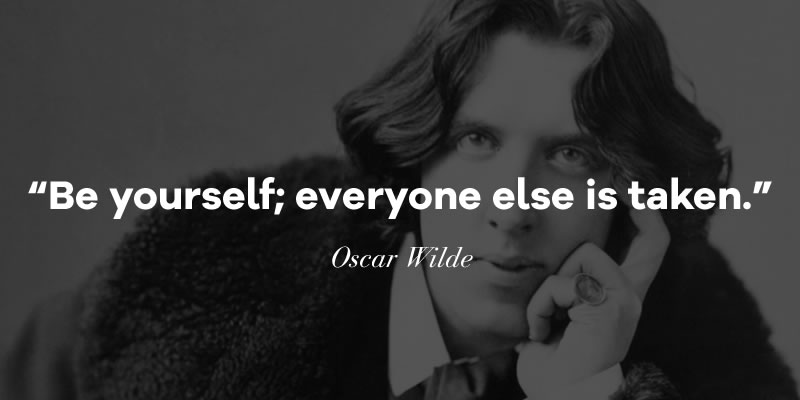
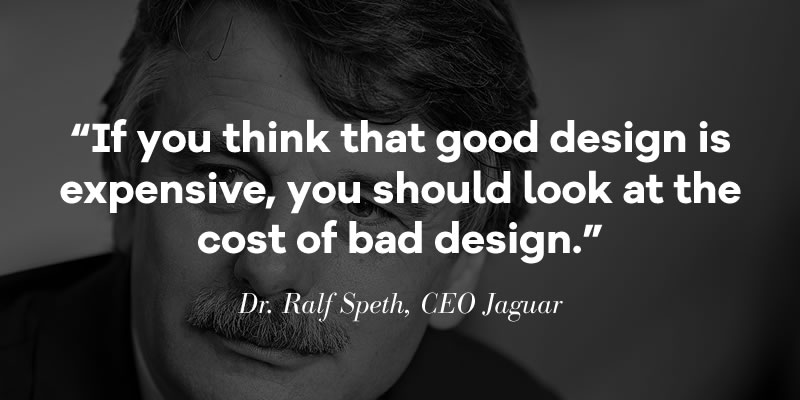
The Logo Creative – In less than 10 words what is graphic design?
Alina Wheeler – I think Lou Danziger said it best, “Design is intelligence made visible.” This quote is often attributed to me, but it has been attributed to Danziger in all of my editions.
The Logo Creative – What steps did you take to start your graphic design business? Did you have to make any sacrifices on your journey?
Alina Wheeler – I have always worked for myself. I was a single entrepreneur until I met Joel Katz, and we formed Katz Wheeler. Joel had studied at Yale under some of the greatest graphic designers of the 20th century—people like Paul Rand and Herbert Matter. Joel, a brilliant designer in his own right, taught me more about good design than any education I had ever had.
I dissolved the partnership after 14 years and started to experiment. I have reinvented myself over the years—working with different talented people and teams on a range of amazing projects. I would have never accomplished what I did without Richard Cress, Mark Wills, Amy Grove, and Meejoo Kwon. I didn’t start to write books until later in life. Yes, I have invested my time and my savings. I have spent less time with my family and friends when the big projects needed me. At the end of the day, I am lucky to find something that I love that is dynamic, meaningful, and ever-changing.
The Logo Creative – If you could go back in time, what would you tell your younger self?
Alina Wheeler – Find the most talented person you know in the field, and work for them. Buy more Apple stock. And I would also stress, Dream bigger. Write down the dreams and put a post-it note on your forehead. A child and a husband are more important than a client. And get a great hairdo.
The Logo Creative – What’s the most important piece of advice you have received as a designer that’s helped you?
Alina Wheeler – It’s not about selling—it’s about educating. It’s not about what you like, it’s about what works. It’s not your logo—it’s their logo. A logo is not a brand.
The Logo Creative – What would be your advice for new Logo and Graphic Designers?
Alina Wheeler – Build trust. Believe in the process. Earn a seat at the table. Be curious about everything. Learn how to listen deeply. Step away from your devices. Don’t talk about the design—talk about the meaning of what you have designed. Maintain a sense of humor about everything. Keep moving.
BONUS QUESTIONS
I wanted to ask Alina about her new book “Designing Brand Identity 5th Edition” and get Alina’s insights into identity design and the book itself. I was extremely happy to receive a signed copy of the book and would like to thank Alina again for sending this to me which I will be reviewing for our book review section and will link it here once it’s complete.

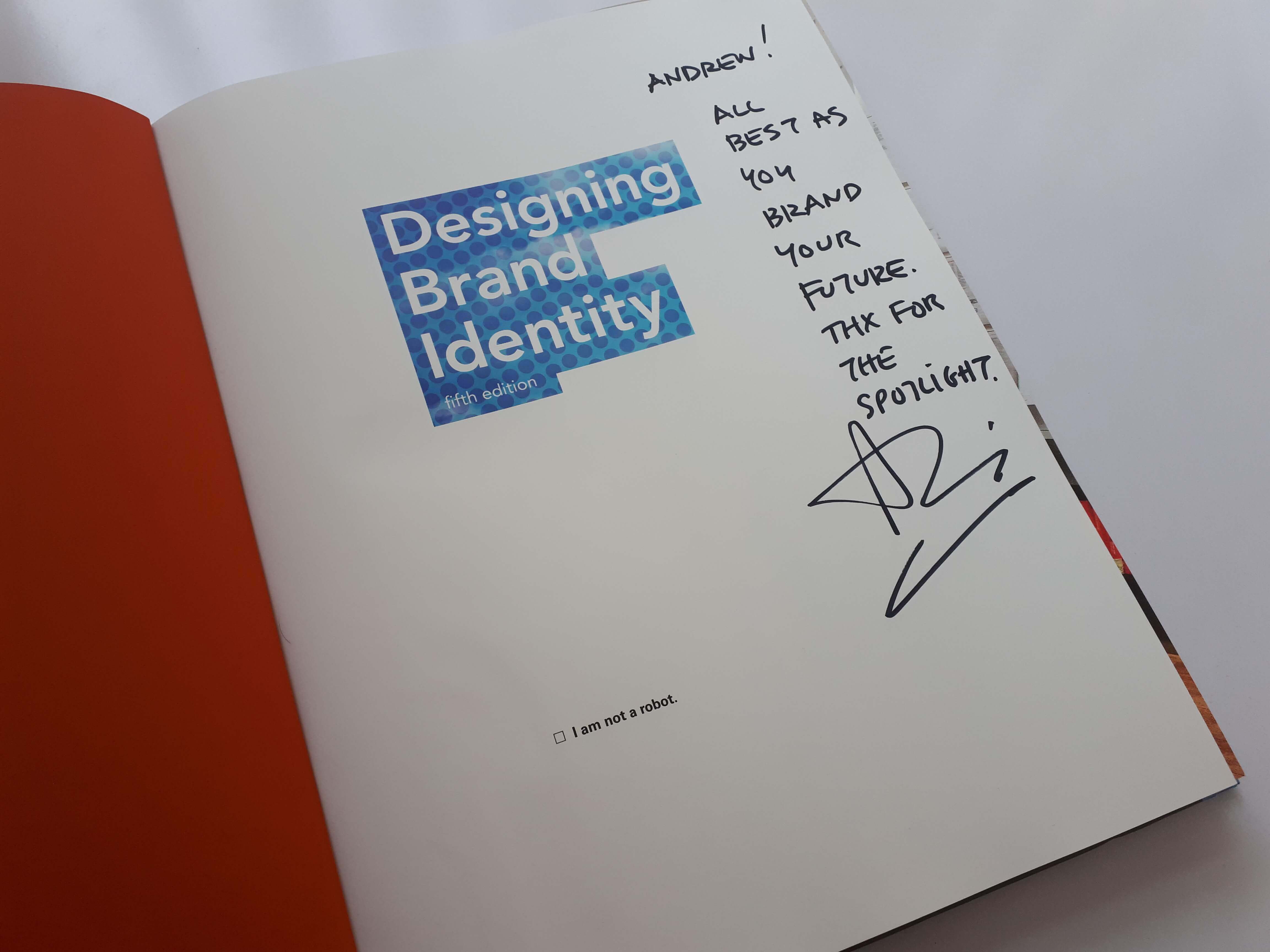
The Logo Creative – Your new book is Designing Brand identity 5th edition. What’s different about this edition, from the 4th edition?
Alina Wheeler – The world changes with each edition. On my first edition, there were no apps or social media. Each edition has seen giant leaps in technology and the culture—and in ideas, like the sharing economy. The new book has 33 new case studies, lots of new content like Big Data, Content Marketing, Culture and Brand Governance. There are over 400 new images and hundreds of new quotes. And, Debbie Millman, wrote the intro!
The Logo Creative – Why did you write Designing Brand Identity?
Alina Wheeler – It didn’t exist. There were lots of academic books on brand strategy, and lots of eye candy books on the best logos. There was nothing about the process that an organization (profit or non-profit, large or small) could use to achieve remarkable results. I wanted to demystify branding, and I wanted to demonstrate and amplify the relationship between strategy and good design.
The Logo Creative – How did you develop the process and the stages you outline in the book? Did these come from your own design practice or insights from other designers, and if so who are those influencers?
Alina Wheeler – I worked on many large projects where there were numerous decision-makers and lots of internal politics. I needed to develop a method –or a process –that would help decision makers with different agendas come together. By creating a one-page map, decision-makers were able to understand where they were in the process. I also wanted to focus the process on building trust, and clearly understanding the problem and the challenges of the marketplace, before any design was presented.
The Logo Creative – In your opinion what is the difference between logo design and identity design?
Alina Wheeler – Logo design focuses on one symbol or logotype. Identity design examines the context of that symbol in the marketplace and includes the development of a whole integrated system: color, typography, brand architecture, key messages, images for content marketing.
The Logo Creative – What are your thoughts on the state of identity design today?
Alina Wheeler – I think it’s a very exciting time for the intelligence and craft of the discipline. I see a lot of really smart work. I think that designers are playing a key role in a world where digital, virtual and physical are all converging.
The Logo Creative – The book continues to be popular in the brand identity industry, why do you think this is? Do you think it’s because of how you outline the process in such a comprehensive way or is this due to something else that is attractive within identity design itself?
Alina Wheeler – For the design practitioner, I believe that I created a resource that is easy to access in the midst of a big project. “I am interviewing the CEO tomorrow—what questions should I ask?” “What are the other big companies that have renamed themselves or gone through a successful rebrand?” “What is brand architecture?” “What are the different kinds of research?”
My book is often purchased and given to clients to educate them—about the fundamentals of branding, a step-by-step disciplined process, and about the role that design plays in building organizations.
Designing Brand Identity is organized by spreads—each subject has only one, two-page spread. I have taken really complex information and distilled it to its essence. It’s very visual—there are over 700 images and illustrated best practices from around the globe.
My book is a labor of love about subjects I feel very passionate about. I think my readers appreciate that.
learn more about Alina Wheeler | Designing Brand Identity
Check out designers interview discussion on Linkedin
Join The Logo Creative LinkedIn Group | Join Our Community Server



